Latest News
Kitchen Chat and more…
Kitchen Chat and more…
Bruichladdich – one of the most famous distilleries on Islay – happens to be one of WhiskyGeeks’ favourite distillery as well. While we have yet to visit this top-notched distillery, we just have to pen something about this progressive, Hebridean, distiller.
The history of Bruichladdich is comparable to a roller coaster ride. The Harvey brothers – William, John and Robert – established Bruichladdich in 1881 on the shores of Loch Indaal, on the Rinns of Islay. They built Bruichladdich stone by stone and designed the building with an efficient layout.
They installed uniquely tall and narrow-necked stills and other state-of-the-art equipment that was unheard of in those days. Bruichladdich was one of the top notched distilleries in Islay. Sadly, the Harvey brothers were better distillers and engineers than they were businessmen. The distillery struggled against the bigger players, and soon, it fell into trouble. A fire broke out in 1934, and shortly afterwards, William Harvey passed away. The distillery was sold several times after 1936 before getting mothballed in 1994. The reason for mothballing was “surplus to requirement”.
Bruichladdich distillery saw a gleam of hope when it was purchased by Mark Reynier of Murray McDavid with the funds from a group of private investors in December 2000. Official records said that he brought the distillery for £6.5 million, but in fact, he brought the 8,000 casks maturing inside the distillery for that amount! The buildings were practically free. Right after the purchase, Mark hired Jim McEwan, the whisky legend who was, at that time, working with Bowmore Distillery, as the master distiller and production director.
The next few months saw Bruichladdich risen from the grave as Mark and Jim dismantled and renovated the entire distillery. While most of the exterior of the building was dismantled and renovated, they refurbished the old, Victorian equipment and restored them for usage. Mark was determined to retain as many of the Harvey equipment as possible, and they managed to do just that! Today, these old pieces of machinery stood proudly in the distillery as the hallmark of the history of Bruichladdich.
In 2012, Rémy Cointreau bought Bruichladdich Distillery and remained as the owner today.
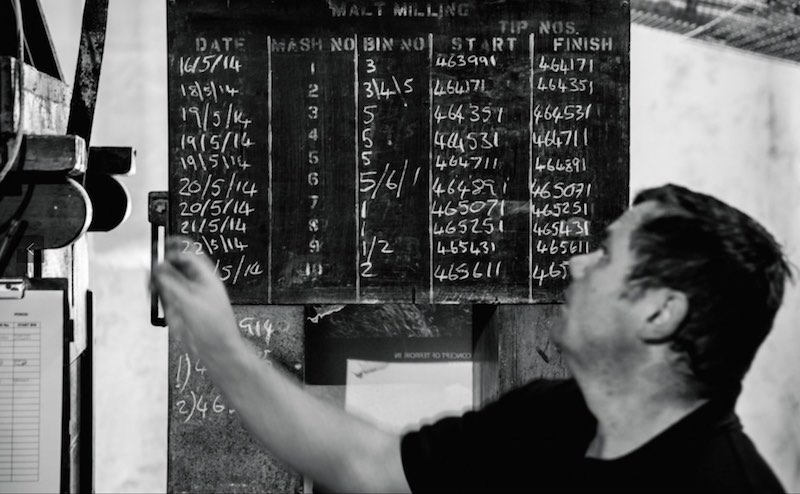
Production at Bruichladdich with Graham Hayes (Picture Credits)
Bruichladdich is a non-conformist distillery, rejecting many of the “whisky production theories” of the day. Believing that industrialisation and self-interest have strangled the whisky industry, Bruichladdich strives to be different. Instead of following the “rules” of the days, the people behind the distillery set their mind to be innovative and creative distillers.
The people at the distillery believe that whisky needs a character to convey authenticity. They believe in variety, innovation and progress. Bruichladdich is not after a title of homogeneity; it is after a change. The distillers think that the world needs a challenger, one that will stand in the face of blandness and denounced it as such. Hence the distillery often surprises their fans with exceptional, new creations.
Bruichladdich also produces a gin – The Botanist. Similar to what they do for their whiskies, they make sure that The Botanist is different from gins presented by other companies. If you have yet to try a Botanist, it is time for you to try!
Bruichladdich works closely with the people living in Islay as well as the land that forms Islay. Islay farmers planted barley in response to Bruichladdich’s call for an Islay Barley, and others built sheds to dry the barley for the distillery. The land yields the barley; the mountains and lochs produce the water source for mashing, distilling and bottling. Most importantly, the people of the island come together to create whiskies that speak of its origins. It is also the largest, independent employer in Islay.
Bruichladdich believes passionately in terroir – authenticity, place and provenance. That is a heritage that they are proud of.
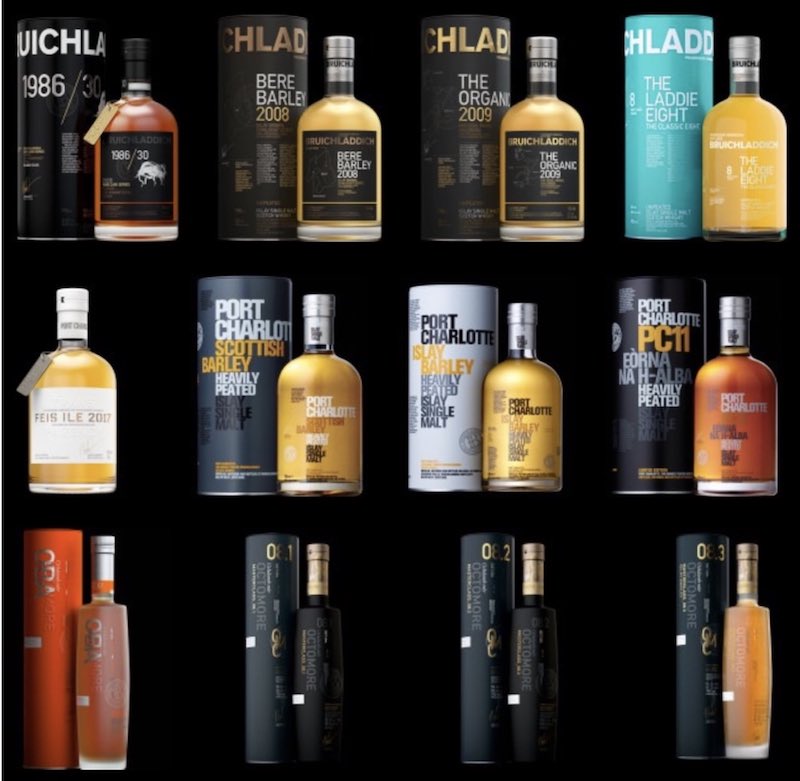
Some of the whiskies made in Bruichladdich Distillery (Picture Credits)
Bruichladdich produces three different brands of whiskies in the distillery. They have the Bruichladdich brand, serving up unpeated whisky. Then, there is Port Charlotte, a heavily-peated whisky at 40ppm. For the peatheads, there is Octomore, the most-heavily peated whisky in the world.
Classic Bruichladdich is unpeated, floral and sophisticated. It is a natural whisky which is non-chill filtered and colouring free. The whisky is made purely from Scottish barley, although there are some expressions distilled from Islay Barley and Bere Barley.
This range of whisky is living proof that Bruichladdich rejects traditional labelling of the whisky-producing regions in Scotland. Produced in an area where peat is the norm, the Classic Laddie challenges the label of what constitutes an Islay whisky.
The range of Port Charlotte is a tribute to the men who once worked in Lochindaal distillery from 1829 to 1929. It is peated to 40ppm and still retains the classic floral complexity of the typical Bruichladdich. The most exciting nibbles about Port Charlotte is that the original stone warehouse of Lochindaal distillery in Port Charlotte still stores the maturing spirits now.
Octomore is famous; or in the distillery’s own words, it has taken the world by storm. It was a “what if” idea that turned into a reality. Named after the Octomore farm on the hill above Port Charlotte, the whisky is a legacy to the farm that used to be a distillery. In 1816, Octomore farm was a self-sufficient distillery. It grew its barley, cut its peat and distil its whisky on the farm. While the spark burned only for a few years, Bruichladdich Distillery carried the legend till today through the Octomore range of whisky.
Octomore is known as the world’s most heavily peated whisky. One of the latest expression, the Octomore 8.3, is peated to 309ppm! Contrast to expectation, the whisky is aromatic, floral and sophisticated. You will never expect something so delicious!
It is no secret that Bruichladdich continues to be a progressive distillery in today’s whisky world. We trust that Bruichladdich is striving harder than ever before to produce authentic, good-quality whiskies for the world.
We look forward to new releases from Bruichladdich. As always.
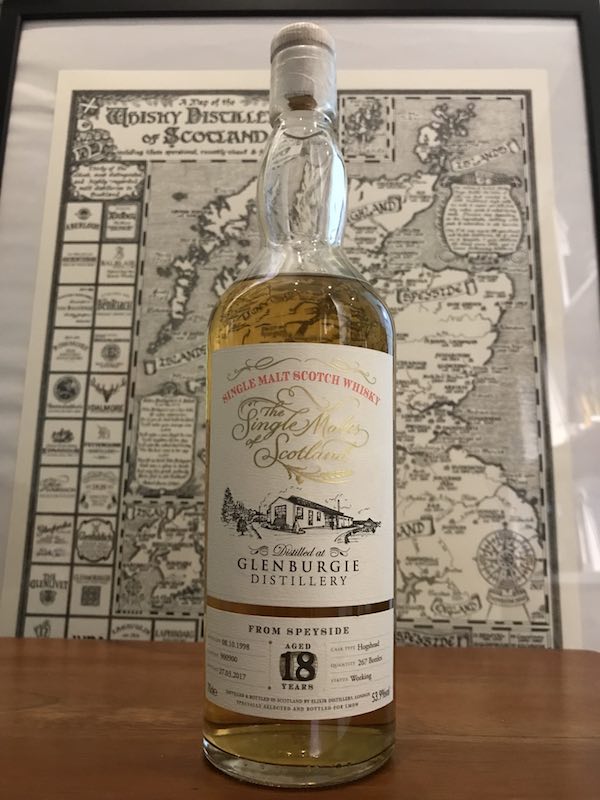
LMDW Glenburgie 18 Years Old
It has been quite a while since we last made a whisky review. It is time to do yet another whisky review for our readers! For the first review in 2018, we decided to dedicate it to a beautiful expression from the Glenburgie distillery, selected and bottled for La Maison du Whisky (LMDW).
Glenburgie is a Speyside distillery. This expression is a single cask with a yield of 267 bottles from a hogshead. Distilled in October 1998, it is bottled in March 2017. The liquid spent 18 years maturing patiently in the hogshead.
Let’s head straight to the review now without further ado!
Colour: Gold
ABV: 53.9%
Nose: The first sniff brings sweet tropicals fruits – pineapples, green apples and sweet bananas. A second nose brings the pineapples and bananas to the forefront, with the green apples receding a little. The third sniff after 5 minutes reveals warm spices and hints of vanilla appears in the background. (18/20)
Palate: Warm spice envelops the mouth in the forefront at the first sip. A quick second sip brings the expected tropical fruits – pineapples, bananas and green apples into the mouth with strong vanilla notes hanging around in the background. After 5 minutes, oak influences surface with a slightly drying mouthfeel. (18/20)
Finish: It has a medium to long finish. Astringent oaky taste lingers in the mouth with pineapples and hints of green apples. (17/20)
Body: There is superb balance in this 18 years old expression. The sweet tropical fruits are consistent from the nose to the finish. The influence of bourbon oak is also constant with vanilla notes and that slightly astringent mouthfeel. The only pity is perhaps the length of the finish. If it is longer, the whisky would be more excellent. (37/40)
Total Score: 90/100
Geek Flora: “This is a dram for the sweet tooths. The tropical fruits play their parts well, giving off the sweet scent that lures many into whisky. I love it!”
Geek Choc: “Hmm…It is a beautiful dram for sure. However, it might not gel too well for those who are not into any kind of sweet whisky at all. I think this whisky should be drunk as quickly as you can once the bottle is opened – the sweet flavours might change if it is aired too long.”
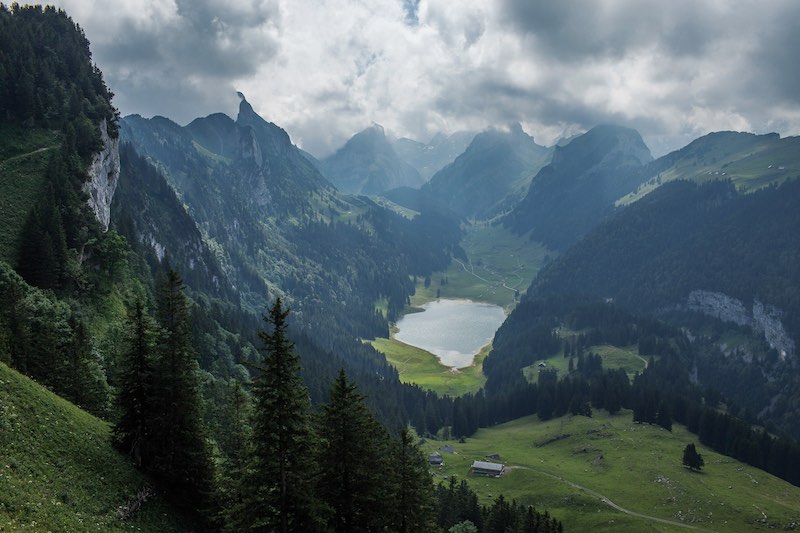
View of the Distillery from the Mountains
When it comes to whisky production, most people immediately link their thoughts to Scotland and Japan. These two countries are possibly the most popular whisky-producing regions in the world. However, do you know that there is whisky produced in Switzerland?
If you have not heard, let WhiskyGeeks show you Säntis Malt – the Swiss Alpine Whisky!
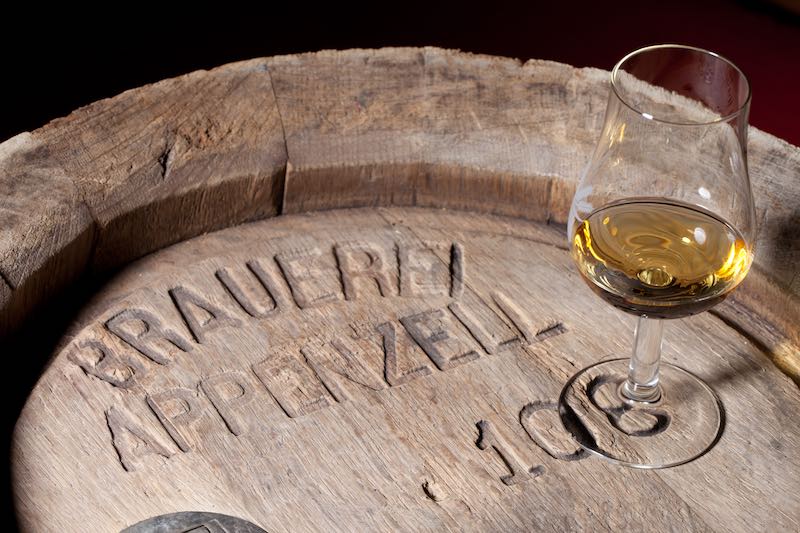
Säntis Malt
The legend of the Locher family and their beer-crafting skills began in 1886. The family took over a brewery in Appenzell, Oberegg in that year, and started a family-operated brewery named Brauerei Locher AG (BLAG), producing good-quality beer for the region. Years passed, and BLAG grew in production. As their fame soared, people from far and wide began sourcing for the Appenzeller beer produced by BLAG in their local bars and taverns.
The brewery began transporting their beer in casks that sealed with pitch. As popularity grew further, these casks became a vital transportation tool for the precious ale. As a result, some of these casks did not have the chance to get repaired regularly, and the pitch used in the casks cracked over time. Beer soaked the barrel staves. Due to the high demand, the brewery did not replace these casks immediately, but instead, reapplied the pitch to the staves. The casks continued to transport Appenzeller beer all over the country. Thus, the beer extract and flavour was locked efficiently into the staves for years.
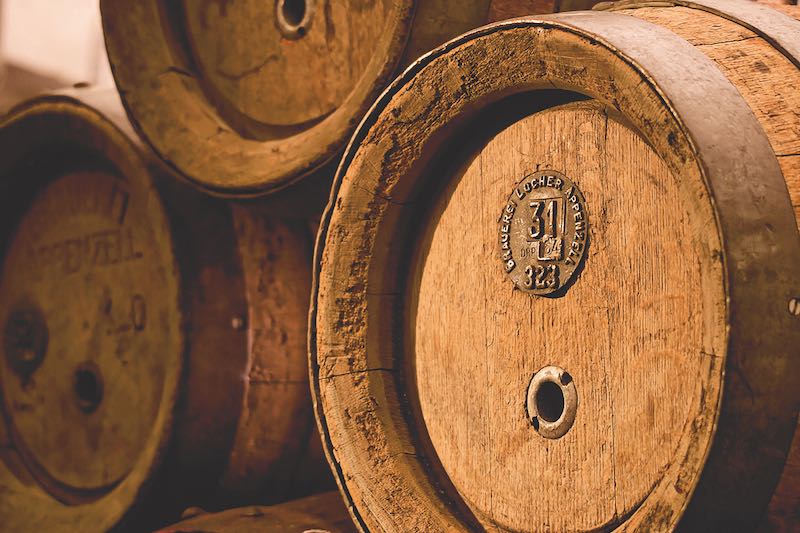
Old Beer Casks
Säntis Malt was the brainchild of Master Brewer, Mr Karl Locher, the fifth generation of the Locher family to manage the brewery. In 1999, the authorities lifted the ban on the distillation of spirits from grains in Europe, and Mr Locher began to think how he could make use of this newly amended law to create new products for his brewery.
The old beer casks used for beer transportation before the 1970s were still around, and Mr Locher began to think if he could make use of these matured aromas and beer extracts to make whisky. With creativity and innovation in mind, Mr Locher started to repair the casks. The BLAG team expertly removed the pitch, and experts examined the casks for their suitability as whisky casks. Upon investigation, it became apparent that the beer-soaked casks were perfect for whisky maturation!
Mr Locher began to distil barley in his brewery using spring water from the Alpstein and poured the new-make spirit into the old beer casks for maturation. That is the birth of Säntis Malt – the unique beer-aged whisky from the Swiss Alpine.
In Scottish laws, spirits need to mature in a cask for at least three years before it is “whisky”. The BLAG Distillery followed this rule and released the first Säntis Malt in 2002. Säntis Malt, therefore, entered the history books as the first Swiss whisky ever produced.
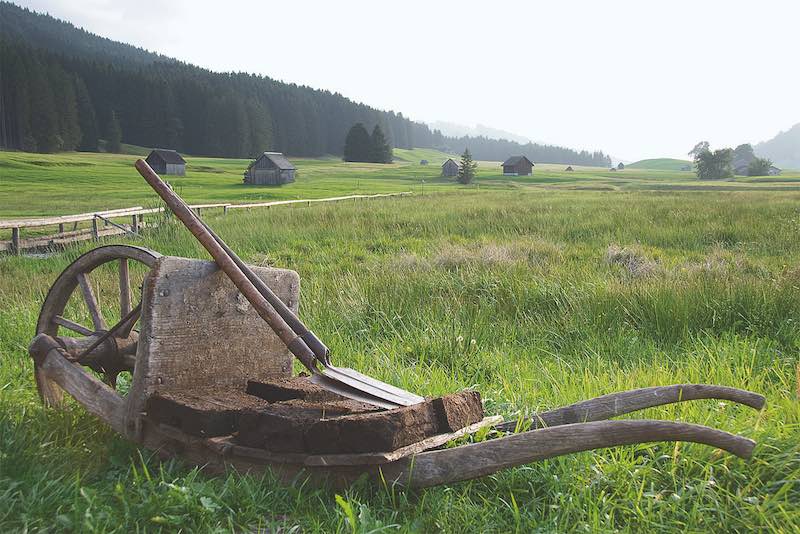
Barley field and Plough
BLAG further strengthens its whisky production procedures by growing barley locally at high altitude. The barley is subjected to harsh weather conditions in the Alps and emerged with vitality and strength. These qualities help to make excellent new-make for Säntis Malt whisky production.
Over the years, BLAG produced a range of Säntis Malt that is available in selected parts of the world. Each whisky is unique on its own. Currently, there are a few whiskies which are in the core range and many others which are limited releases by the distillery. Let’s take a look at some of them.
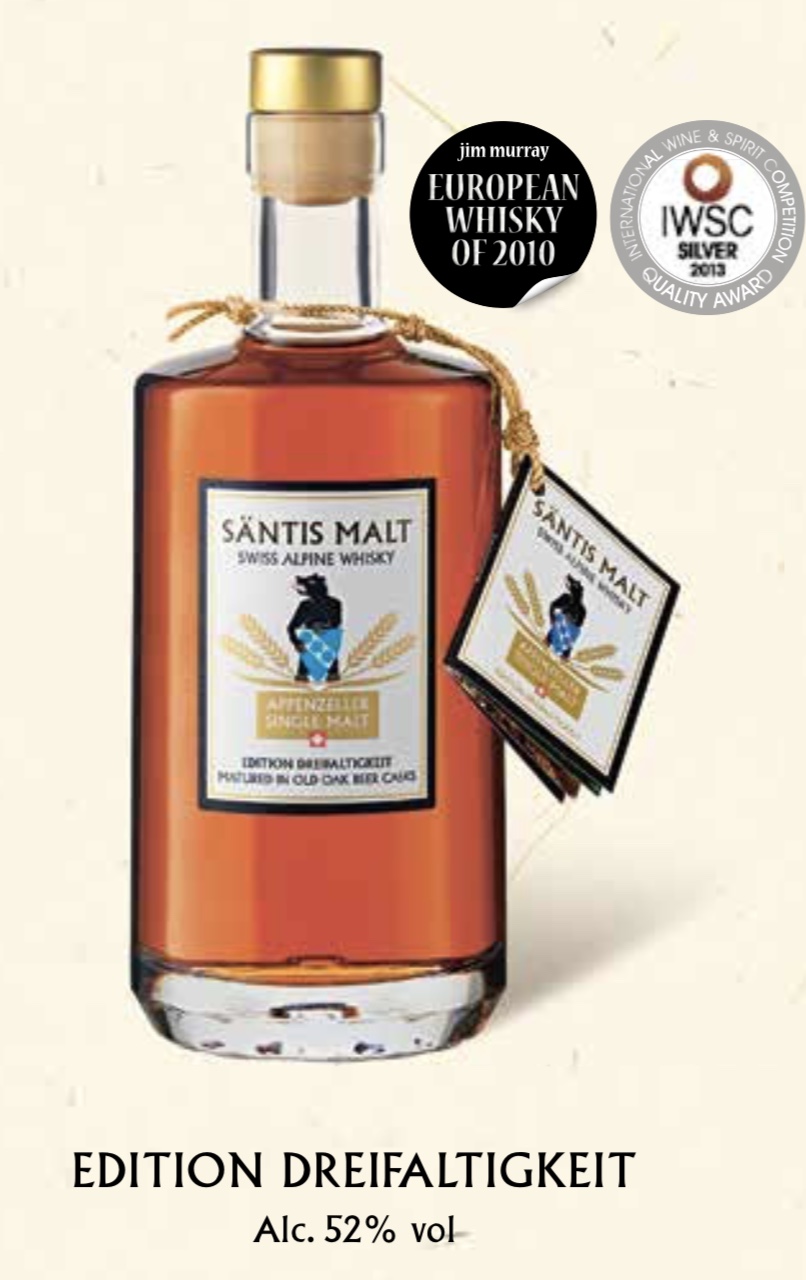
Dreifaltigkeit
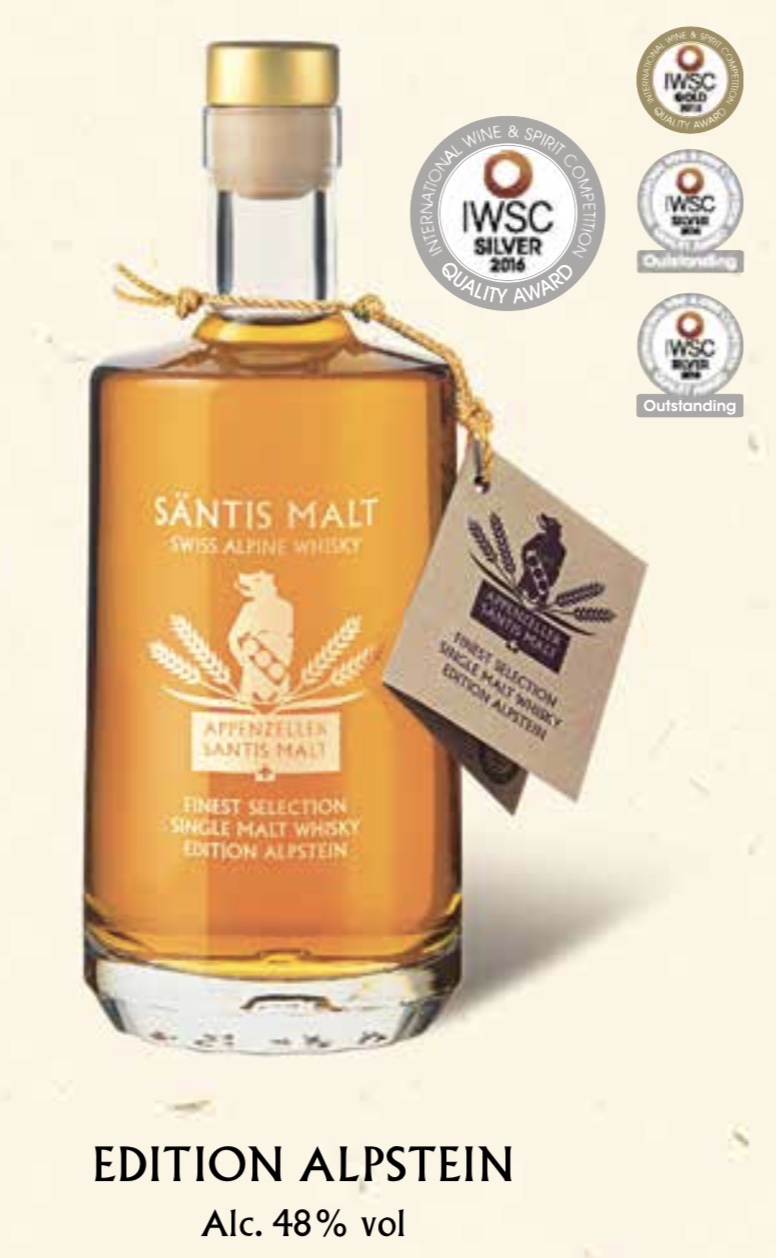
Alpstein
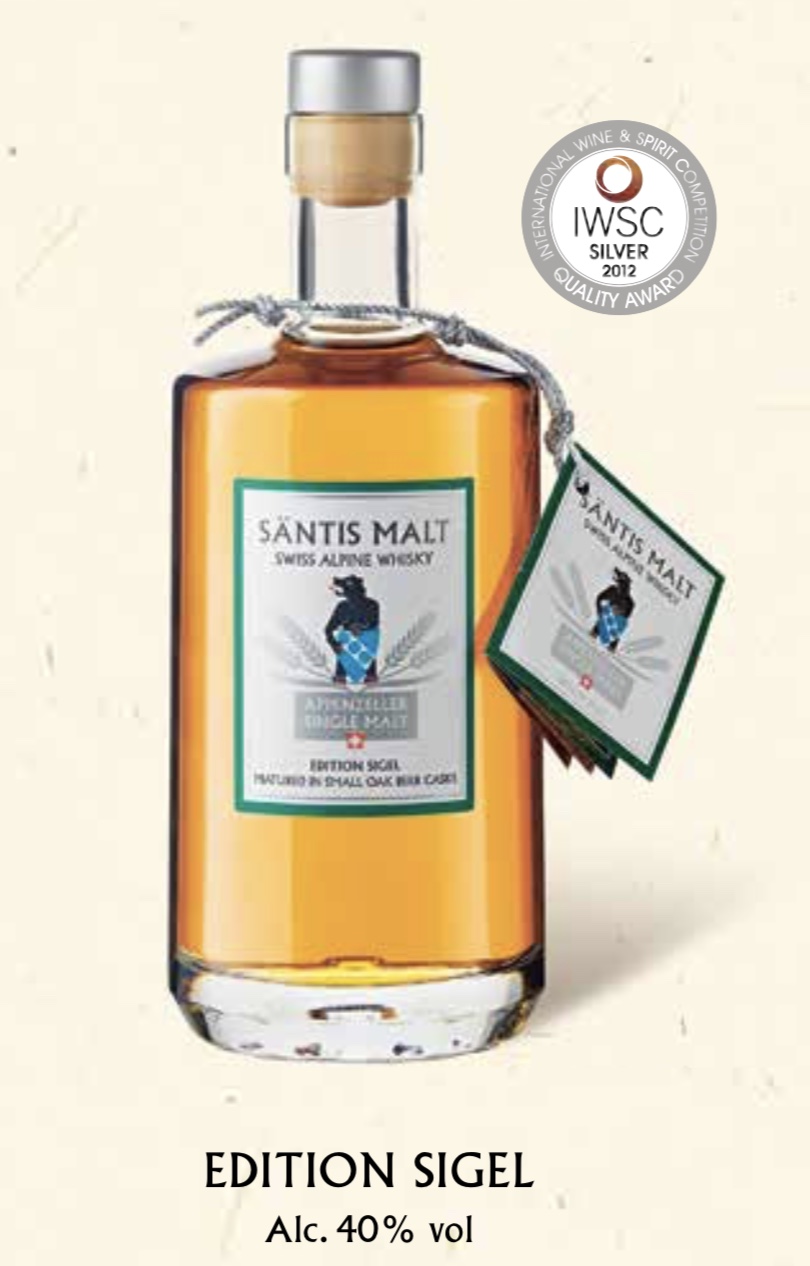
Sigel
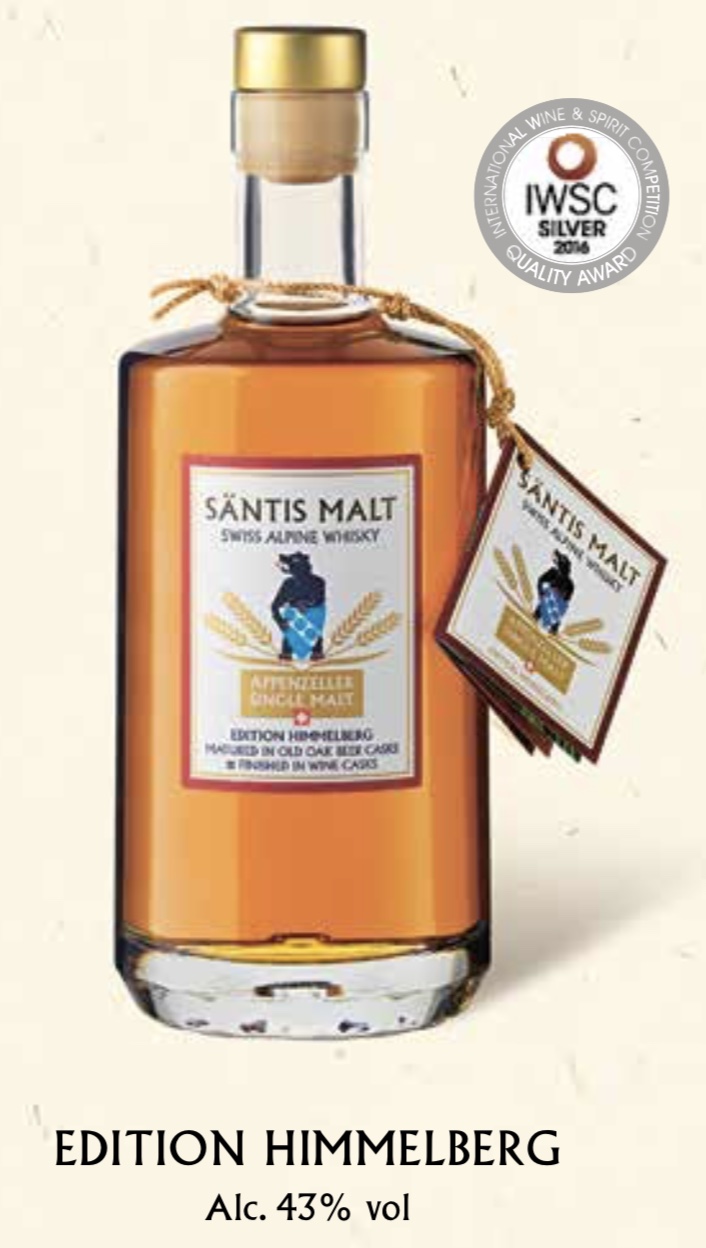
Himmelberg
The four whiskies that we have above are all award-winning whiskies from Säntis Malt. Each of these beautiful expressions is given recognition at IWSC, and some are praised and awarded by Jim Murray as well.
The Dreifaltigkeit is a slightly peated whisky. BLAG distillery used peat taken from the Appenzell high moor to dry the barley during the whisky production. The gentle peat translates into a smoky, earthly mixture that is slightly oily on the palate. Fruitness is coupled with mild spices to tingle the tongue and leaves you wanting more.
Alpstein is a series of single cask, limited whisky by Säntis Malt. While it is not a discontinued product, each batch of Alpstein is different as each series matured in a different cask finish. The finish can be in a port cask, wine cask (red/white), bourbon or sherry cask. Other special casks are also possible. The Alpstein is an ever-changing series and one which promises to surprise whisky lovers around the world with each limited release.
Edition Sigel is a light and sweet whisky which promotes the purity of the barley used in Säntis Malt. The distillery simply matured the whisky in old beer casks before bottling. The pure malty taste, sweet vanilla, and juicy fruitiness make the Sigel as a popular choice for the ladies.
The Himmelberg is matured in beer casks before being finished in various unknown wine barrels. The result is a light and fruity whisky that opens into woody spice on the tongue. The aromas from the Himmelberg is unique and different from the Sigel as the spiciness of the liquid lends a high complexity to the whisky.
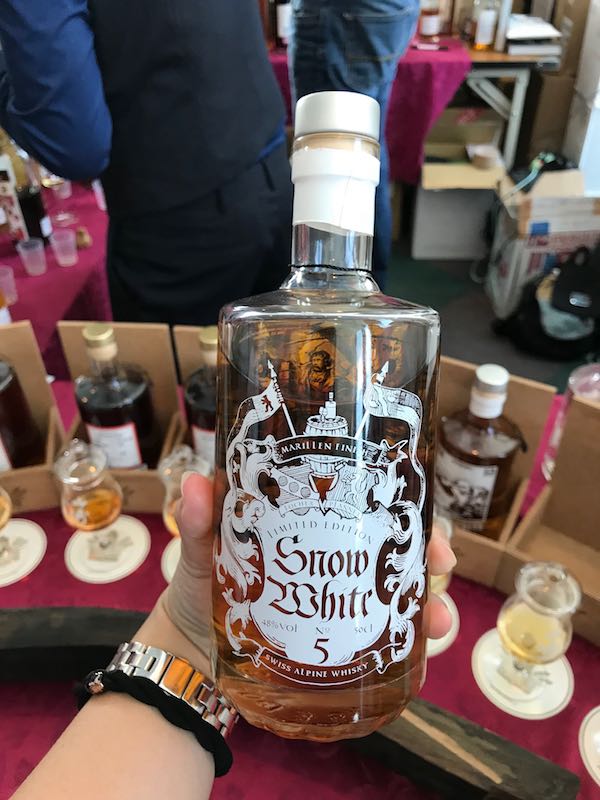
Santis Malt – Snow White No. 5
We mentioned Säntis Malt Winter Edition – Snow White briefly in our article on WhiskyFair TAKAO. Snow White is Säntis Malt’s best expression in our option, as each edition matures in old beer casks before finishing in different fruit brandy casks. Launched for the first time in 2013, Snow White has received such overwhelming fame that the distillery is releasing an edition every year.
The Snow White No. 5 Marille is the latest edition and one which we fell in love with immediately. That sweet apricot taste is heavenly indeed!
Säntis Malt Non-Whisky Products
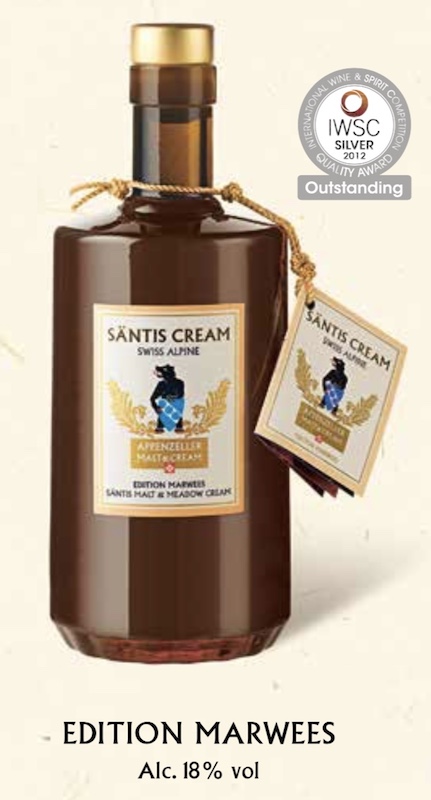
Sántis Cream
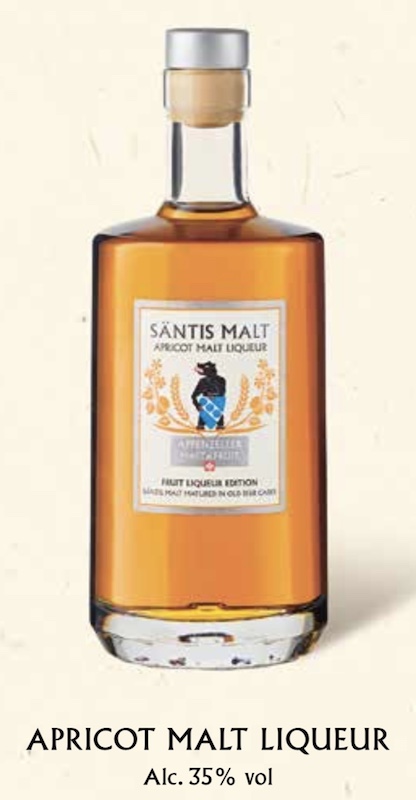
Apricot Malt Liqueur
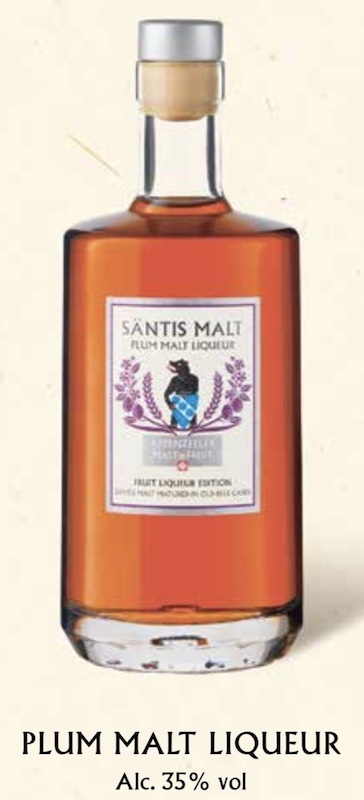
Plum Malt Liqueur
The distillery also produced some non-whisky products using the Säntis Malt brand. Three of these prominent products are the Säntis Cream (or Edition Marwees), Apricot Malt Liqueur and Plum Malt Liqueur. All three products are well received by the market as well and form part of the Säntis Malt range of products today.
Lastly, let us talk a little about visiting the distillery in Appenzell if you are keen to do so. The actual brewery and distillery are closed to the public but there is a huge visitor centre at Appenzell that you have to visit if you are keen to learn more about Säntis Malt. You will have an experienced guide to share in-depth knowledge with you and after that, a chance to taste both the beer and Säntis Malt whisky. Find out more about the distillery here.
The WhiskyTrek is another interesting activity that you can do. Trek to 27 mountain inns deep in the mountains of the Alpstein and collect 27 different Säntis Malt expression in a beautiful collector’s box. The whisky must be purchased with vouchers so make sure you buy at least one booklet at the distillery or the Appenzellerland Tourist Office. If you forget, you can still purchase these booklets at the mountain inns.
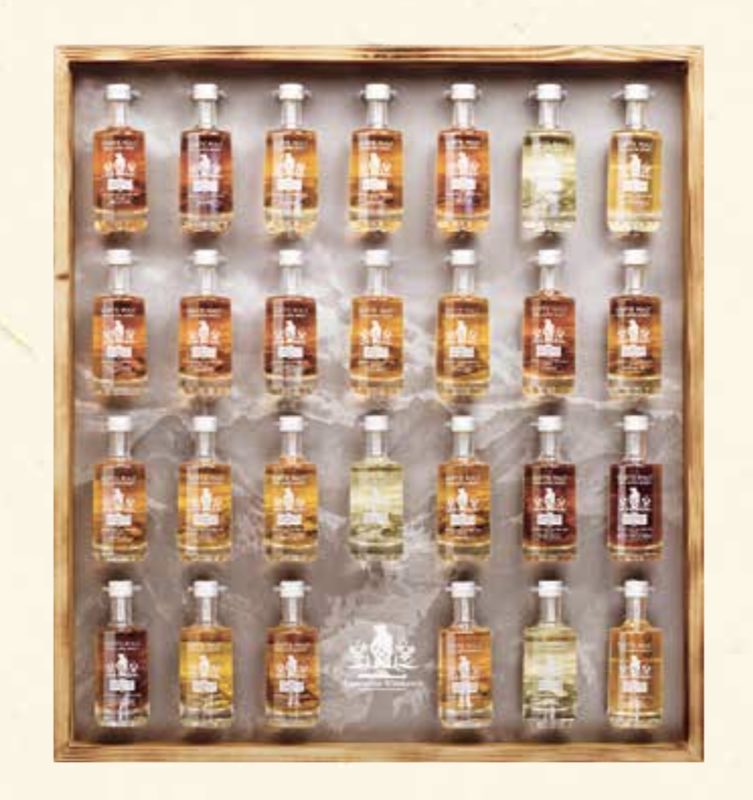
WhiskyTrek Collector’s Box
Such an experience is only available at Appenzell, so if you are visiting, be sure to contact the distillery to find out more about the trek!
11311 Harry Hines Blvd
Dallas, TX, United States
(555) 389 976
dallas@enfold-restaurant.com
